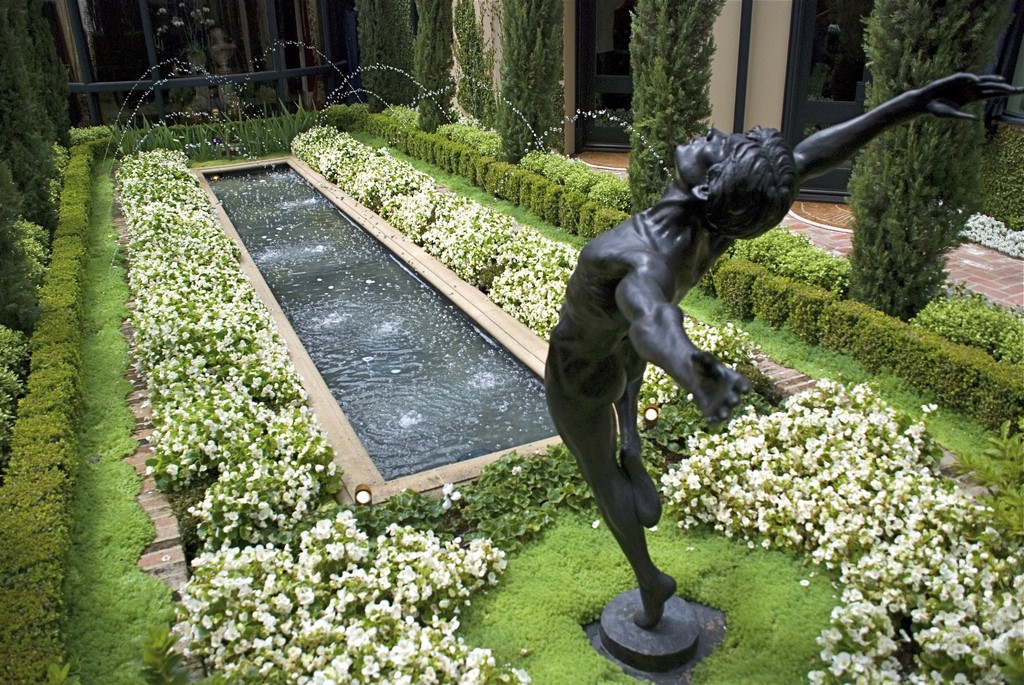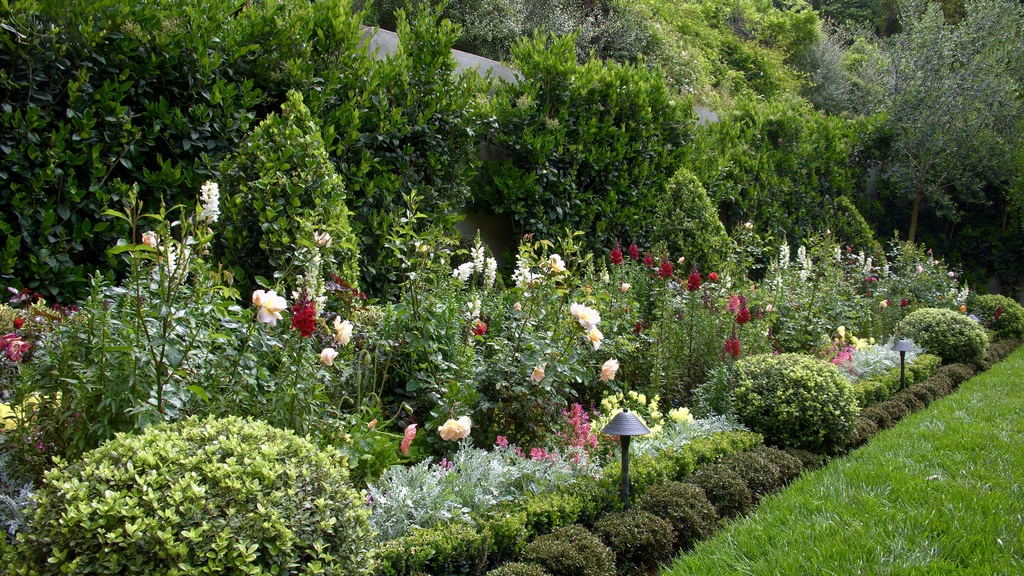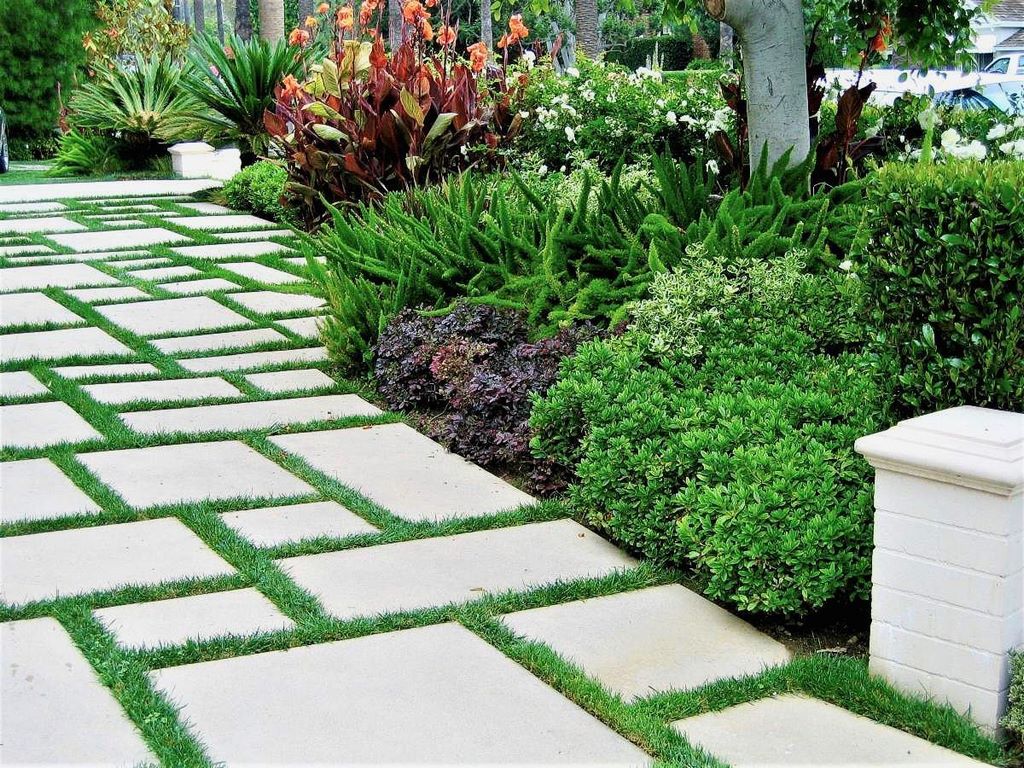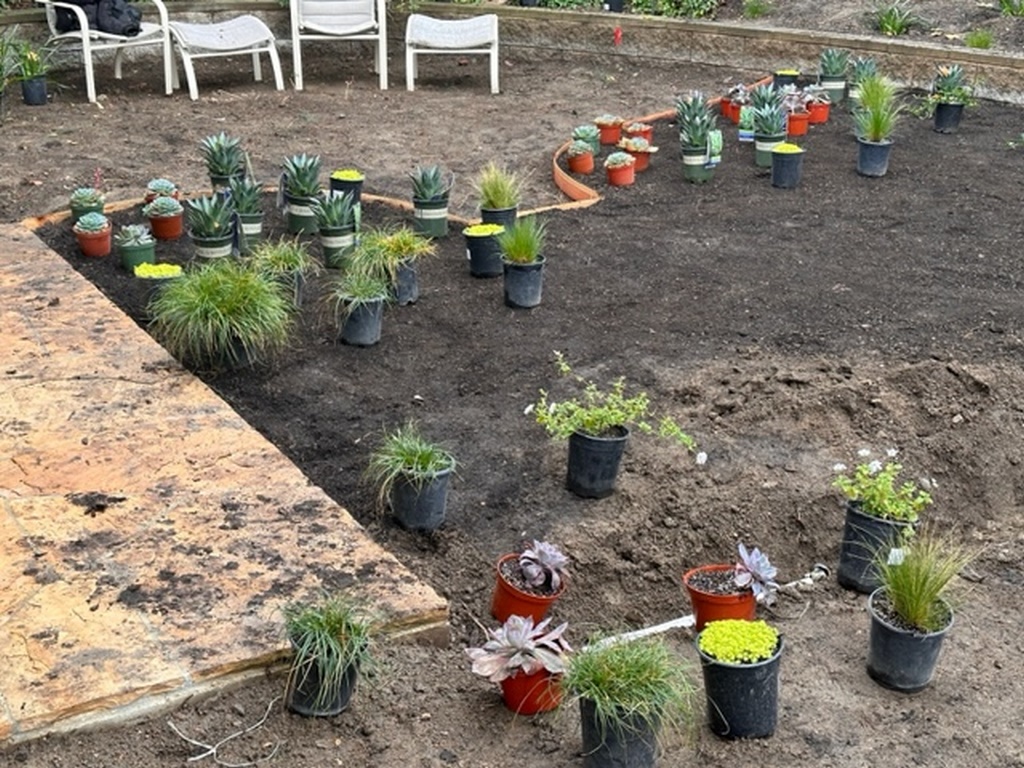Amending the Good Earth


Ensuring a stunning planting environment is all about the ground itself, says landscape designer, Mark David Levine. Beautiful greenery requires forethought and action in the form of soils testing and amendments for newly landscaped areas – a crucial practice he believes should be mandatory for all projects that include garden spaces of any size, style or location.
By Mark David Levine
It’s indisputable – soil is the foundation of all gardens.
That’s why when it comes to sustaining healthy plant growth, the soil’s structural and chemical composition is as critical as sunlight exposure and watering as essential life-giving factors. Without proper soil composition chemically amended to support specific plant species, over time, they will perish or, at the very least, won’t ensure the design intent for that specific plant, or trees, ground covers, etc.
Simply, it’s an absolute necessity because plants should always look more gorgeous as time passes, not worse.
This fact is obvious; yet, because the proper soil amendments are often ignored, the exact opposite happens where plants only look good when first installed, then from there most assuredly the natural beauty will be lost! It could be a month or a year, but it will occur. The client’s investment in beautiful plant material could be squandered, and with it goes the potential aesthetic impact a given space will create in the minds and spirits of those who experience the outdoor living space – it’s all about indulging the senses!
The concept of preparing the ground for health and optimum growth never even comes into the picture for many of us who should know how critical it is. Simply going to a nursery to buy soil amendments like redwood compost, gypsum, nitrohumus etc., is not proper soil amending. Without knowing the specific physical make-up of the soil; it’s surely a waste of money!

That disconnect is unfortunate because plant materials obviously play key roles ensuring overall design intent and maximizing breathtaking beauty of the completed project.
SOIL TESTING IS KEY
Understanding the simple steps of proper soil testing and amending are critical from a “design” standpoint, as well as the success of ongoing maintenance.
That’s all why I believe that soil testing and amending should be standard practice on all projects. We know that geotechnical testing is necessary to understand the forces a watershape structure will have to resist throughout its lifetime. It’s the only way to structurally engineer the project. Likewise, knowing your soil conditions and amending accordingly is equally essential to ongoing botanical performance.
Soils testing and amending is, indeed, the same kind of fundamental issue where you understand the site conditions and take the necessary steps to ensure sustained project success. With that in mind, here are some of the basics you need to know about soil amendments.

The number-one reason for amending the soil is to set its pH. Just as pH is critical to water’s mineral balance, it is also crucial when sustaining plant materials. Measuring the ratio between hydrogen (H+) and hydroxyl (OH-) ions in the soil, and adjusting it to a neutral pH – usually 6.5 to 7.2 for most plant species – is so important because many types of plants are highly pH sensitive. (Note: lime, calcium hydroxide, is often used to raise pH, while compounds containing sulfur are used for lowering it.)
Soils can vary wildly in pH, and other chemical characteristics, within just a few feet, let alone from property to property. You might have neutral pH soil in one place and highly acidic material in another. That variability can have a huge impact on plant performance if you don’t address those differences from the start.
We all know that plants are thirsty, and therefore amending soil also ensures that the “structure” of the soil will hold water, making it readily available for plant absorption. You must amend the soil and use the proper drip irrigation, which is mandatory for all of my projects no matter how large or small the space may be.
These carefully formulated amendments greatly aid efficient water use to maximum plant growth, a major advantage in areas prone to drought. (Perlite and vermiculite are commonly added to support water retention. For more acidic loving plants, like Azaleas, peat moss is preferred.)

As important, amendments ensure that plants have the nutrients they need to grow. A basic soil test will provide you with an estimation of your “NPK” levels (N=Nitrogen, P=Phosphorous, and K=Potassium). On fertilizer packaging, you’ll see these three values. The numbers of each nutrient indicate the percentage of net weight contained in the fertilizer. For example, a 10-pound bag of 10-10-10 fertilizer will contain one pound of each element.
Each of these three key elements support different aspects of plant growth. Nitrogen supports healthy foliage, phosphorus is good for root systems, while potassium drives fruit and flower growth.
Yes, you do need to know the different requirements of different species, and it always helps to select plants that grow well in a given climate zone. Fortunately, that information is readily available from a number of sources.
SOIL FOUNDATION
The world of amendments and fertilizer is vast. Organic matter is the most critical ingredient to improving any soil. It can make heavy clay soil drain better, easier to dig and not as stiff or sticky. It can also help sandy soil bind together, while retaining more moisture and nutrients.
Amendment ingredients will vary, as will the NPK ratios. The mix design will include compounds that will raise or lower pH, facilitate soil aeration, support water absorption and retention, and provide the all-important nutrient mix.
Although you can perform soil tests yourself using test kits available at most Nurseries, I prefer to commission professional soil analysis by companies that specialize in the practice. The professionals come out to the site and conduct tests in key areas, then generate reports that can be used to “design” the landscape. I take those readings and send them to a company, a soil farm, that creates a custom mix including beneficial trace minerals that is directly delivered to the project in needed quantities.
The soil material is delivered to the site where we easily rototill it into the soil prior to planting. I don’t install the drip irrigation until after the plants are in place because it makes it easier to route the irrigation tubing to the precise location where the water will be fed directly to each plant.
PROPER INSURANCE

Soil amendments are in effect a great way to ensure customer satisfaction, and the best way to protect their investment in plant material. That’s always important, but especially so when the project includes expensive plants, such as specimen trees. It’s also a positive when working to restore the vitality of existing plantings, such as trees a client wants to remain part of their garden.
Why go to all the trouble?
Coming from a landscape architecture and ornamental horticulture background, I’ve always believed that plants are one of major components in an outdoor living experience. Consider the difference between rockwork that is enveloped with plants versus rock structures that are naked. Stunning plantings always entice people to journey through the garden; and, greatly enhance architecture and other adjacent design elements.
Plantings have the inherent ability to powerfully transform any segment of the property, creating visual interest from its overall beauty. From the moment you approach the property, it enforces your connection to nature, and the desire to further experience the spaces beyond.
The journey commences at the street, then continues through the front yard, into house, and eventually to the back yard living space. That progression is critical to the overall experience of the property. Then, what does the journey look like as you leave the site? What will the person remember about his overall experience of the garden environment? Every time you take a step it gives you a different perspective of the garden.

For my part, working different types of “salad greens” foliage is so important ensuring vibrancy and interest to the outdoor space. I select plants with different textures, different colors of green, or even gray, silver, and a splash of burgundy, the variety is essential to set off the other hues of the landscape; and, of course, a plethora of flowering plants. Feeding the plants continually on a yearly schedule those subtle differences in color hues is maximized.
In my work, the garden areas cover a wide set of aesthetic possibilities, from highly structured, formal European-style gardens to more natural organic planted areas you might find in tropical or even Asian-inspired settings.
What all plants and planting designs have in common is the need to continually foster healthy growth. Doing so, in effect, reinforces your design intent. You can equate the health of plants with the quality of water. No one wants to be around dirty water that is cloudy and has a consistently bad odor. The same is true of dying plants and trees, etc. Proper fertilizing helps ensure strong root growth thus resulting in a beautiful environment!
ENDURING BEAUTY

At conclusion of each project, I make annual or seasonal fertilizer recommendations for ongoing maintenance. Because plants consume nutrients, timely fertilizing routines are absolutely imperative. If you don’t prepare the soil for success and maintain it with necessary nutrients at regular intervals, it’s just a matter of how long it will take for the plants to wither.
By contrast, I’ve found that when you do include these basic steps in the installation and maintenance processes, the results are consistently impressive in terms of both plant performance and efficient use of water thus resulting in the overall beauty of the garden. Just an amazing difference!
In terms of cost, there’s no comparing the relatively small expense of soil testing and applying specially formulated soil amendments, to the lost expense and frustration when your plants are not able to maximize their growth potential and lasting beauty.
In conclusion, whatever you invest in proper soil amending and drip irrigation underground, you will surely reap the benefits of your enjoyment in the breathtaking environment you have created. Simply, it’s smart business for your client, and yourself.
Mark David Levine is a landscape designer based in Westlake Village, CA. He has been designing upscale residential landscapes for 40 years. His work features extensive garden areas across a range of styles, and beautiful watershapes of all architectural themes.










